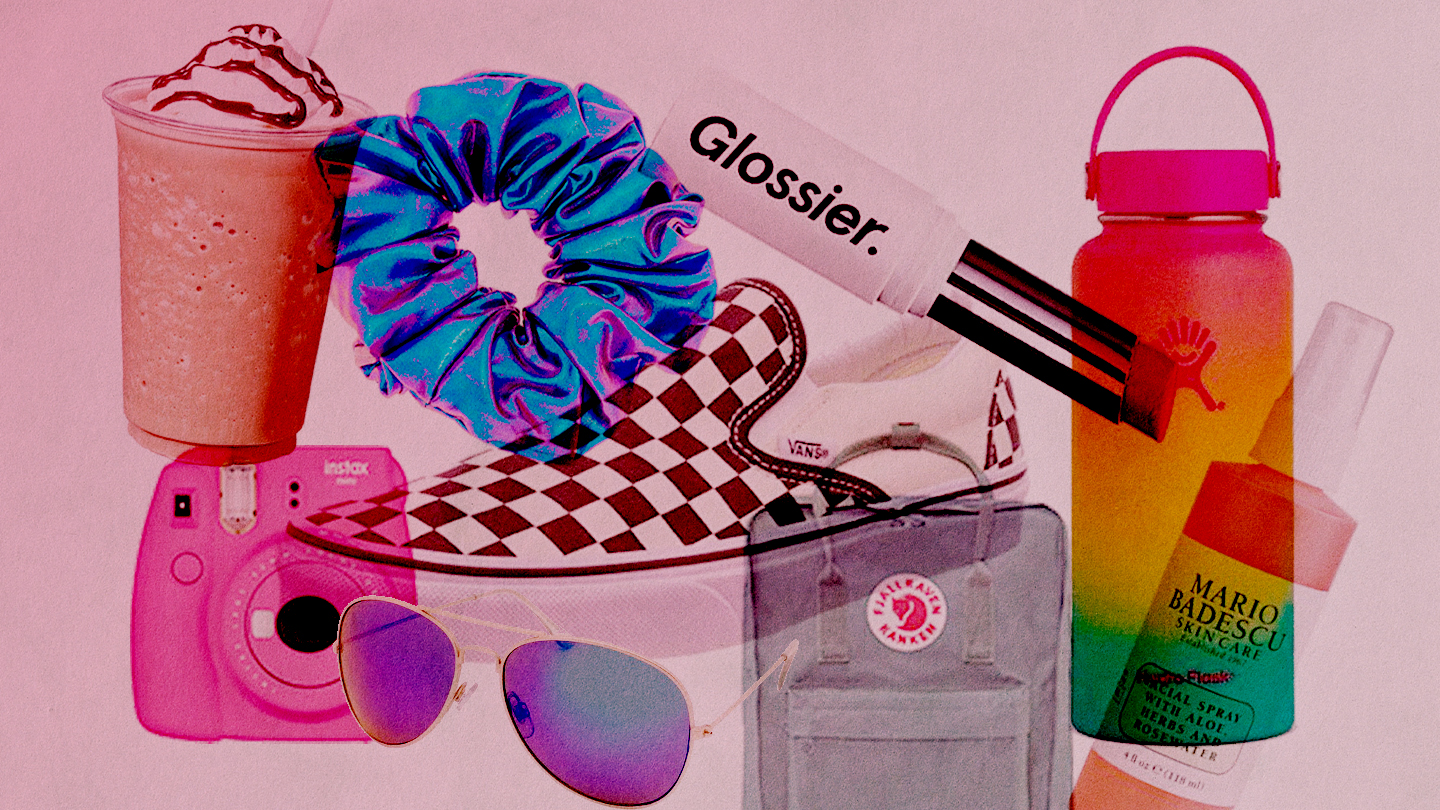First, there were Tumblr girls with their oversaturated photos and faux-film cameras. Then, there were the e-girls with their chains and tiny sunglasses. Now, we’re seeing a rise in VSCO girls, aptly named for the popular photo-editing app they rely on to keep their filtered photos of sneakers and sunsets consistent. I learned of VSCO girls thanks to the teens on TikTok, who largely comprise the VSCO girl trend. In the videos, VSCO girl TikTok users arm themselves with scrunchies, layered Brandy Melville tops, and a Hydroflask. As a queer woman, the first thing I thought of when I saw the trend was that it’s very, very gay.
I’m a 20-something-year-old queer, but I have almost all of the key VSCO girl symbols, and have had them for years. While I haven’t shopped at Brandy Melville—the store is one-size-fits-all, so that’s not happening—the brand’s general aesthetic is one that has always felt informed by gay culture to me. Oversized striped shirts with semi-starched collars, faux-vintage tees, and mom jeans ready for cuffing feels distinctly bisexual, and TikTok’s (and Tumblr’s) bisexual uniform is made up of the same pieces. Birkenstocks have been the shoes of lesbians and the environmentally conscious for ages, and you’re just as likely to find 16-year-old Cool Girls wearing Vans as you are lesbians at a fancy work event or gay bar.
In some ways, this overlap isn’t surprising, because the teens are very gay. A 2016 study found that only 48 percent of Gen Zers identify as exclusively heterosexual, compared to 65 percent of millennials aged 21 to 34. Too, they’re less interested in a binaristic, gendered shopping experience: only 44 percent said they always bought clothes designed for their own gender, versus 54 percent of millennials.
For millennials, “Basic” functioned in a similar way to “VSCO girl.” Other TikTok users mock the VSCO girls for their aesthetic, lining both arms with scrunchies and laughing via “sksksksk,” the official/unofficial sound of the trend. But unlike being “Basic,” VSCO girls are not aggressively straight.
It’s not that Starbucks and brunch are straight things (I would argue that both of those are also gay, especially given the popularity of brunch in so many queer circles), but the women who clamored to embrace the label tended to also be stepping away from any signs of queerness. They were just as likely to tweet about Starbucks as they were to tweet about their boyfriend being the best because he brought them Starbucks. They maybe went to brunch with a gay best friend, but it wasn’t like the mid-2000s Basic girls were surrounding themselves with political lesbians. The label implicitly included a sort of middle-ground, apolitical straight girl requirement. As a queer person myself, I never felt Basic, and I always felt a sort of discomfort with the label, knowing it was really never meant for me—despite my love of all things pumpkin spice and golden retrievers.
Meanwhile, the VSCO girl aesthetic embraces key lesbian stereotypes: wearing things that technically aren’t “flattering” or “feminine” enough (Birkenstocks, oversized clothing, high-waisted denim), being generally low-maintenance in terms of beauty (VSCO girls love a scrunchie and a messy bun, and forgo styling their hair in favor of a more natural look), and caring a lot about the environment (hence the Hydroflask and screaming about metal straws and turtles). Considering that one of the most prevalent stereotypes of lesbians is that they don’t care what they look like, wear men’s clothing, and head into the woods for a hike via their Subarus to talk about recycling, burning bras, and fighting the patriarchy, VSCO girl culture feels a lot like lesbian culture in disguise.
As a queer woman twice the age of most of these VSCO girls, I’m happy to see this blurring of lines. There’s something comforting about the idea that these new style and overall aesthetic trends are less interested in “this is for girls” and “this is for boys,” and “this is for straight people” and “this is for lesbians,” but is instead complicating that. While it’d be convenient to know that every single woman wearing Vans is gay, there’s value in the idea that stereotypes are fizzling out because of the way that Gen-Z embraces fluidity and gives themselves, and each other, space to build their identities via style.
